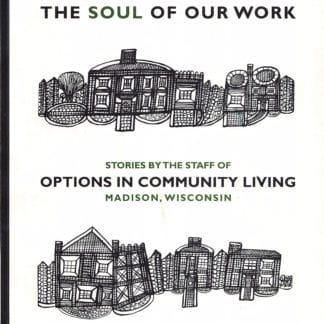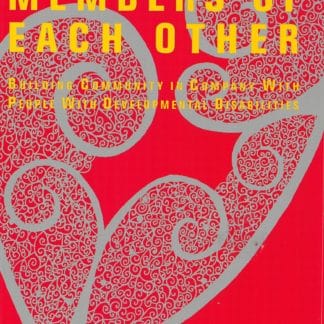John O’Brien & Connie Lyle O’Brien
1995
Listen with an intensity that most people save for talking.
Lilly Tomlin’s “Edith Ann”
What does it mean to listen?
People come to life when they make contact with someone who works actively and faithfully to understand what they want to say. When people communicate in unconventional ways, or when they have been rendered invisible by an environment that discounts the worth of their communication, the effects of listening can be profoundly energizing. Those who communicate without words, those who use words and symbols in unique ways, and those who communi-cate within the drama of their behavior call on their listeners’ whole emotional, mental, and spiritual selves. They remind us that listening is much more than passing strings of words from mouth to ear. Listening is resonating in body, in imagination, and in spirit. Listening to people who live with the consequences of a lifetime of isolation and discrimination is often painful, frightening, and exciting.
Listening liberates energy A person’s sense of direction grows stronger. The possibility of conflict with established rules, common practices, and fixed views of the person’s possibilities increases. Blocked listening generates frustration. To want to understand and not to get the message can lead to a sense of impotence and anger.
As interest in person-centered planning grows, the refrain, “listen to the person,” becomes almost too familiar. Being able to say how important it is to listen is not the same as listening actively and faithfully to people who are just finding their voice. To improve our ability to listen, it is important to examine three dimensions of our listening: where we listen from, what we listen for, and how we listen.
Where we listen from We listen best when we stand with people; close enough to smell and hear each other, to touch and be touched. Standing with a person means being willing to accom-modate the person’s preferences for communicating, and being willing to thoughtfully consider joining the person in taking action. Habit tempts us to stand over or stand away from people with disabilities. In many agencies, informal norms encourage staff to keep “them” under control to minimize liability or to maintain routines. We stand over people when we expect them to tell us their dreams at times and places and in terms that are comfortable for us. Much train-ing promotes detachment and “objectivity”. We stand away from people when we collect data to map their lives into our categories -whether that data accounts frequencies of target behaviors or visions of a desirable future. Frustration or conflict evokes habits of control or distance. These habits take us away from the question we most need to answer. “How can I show this



